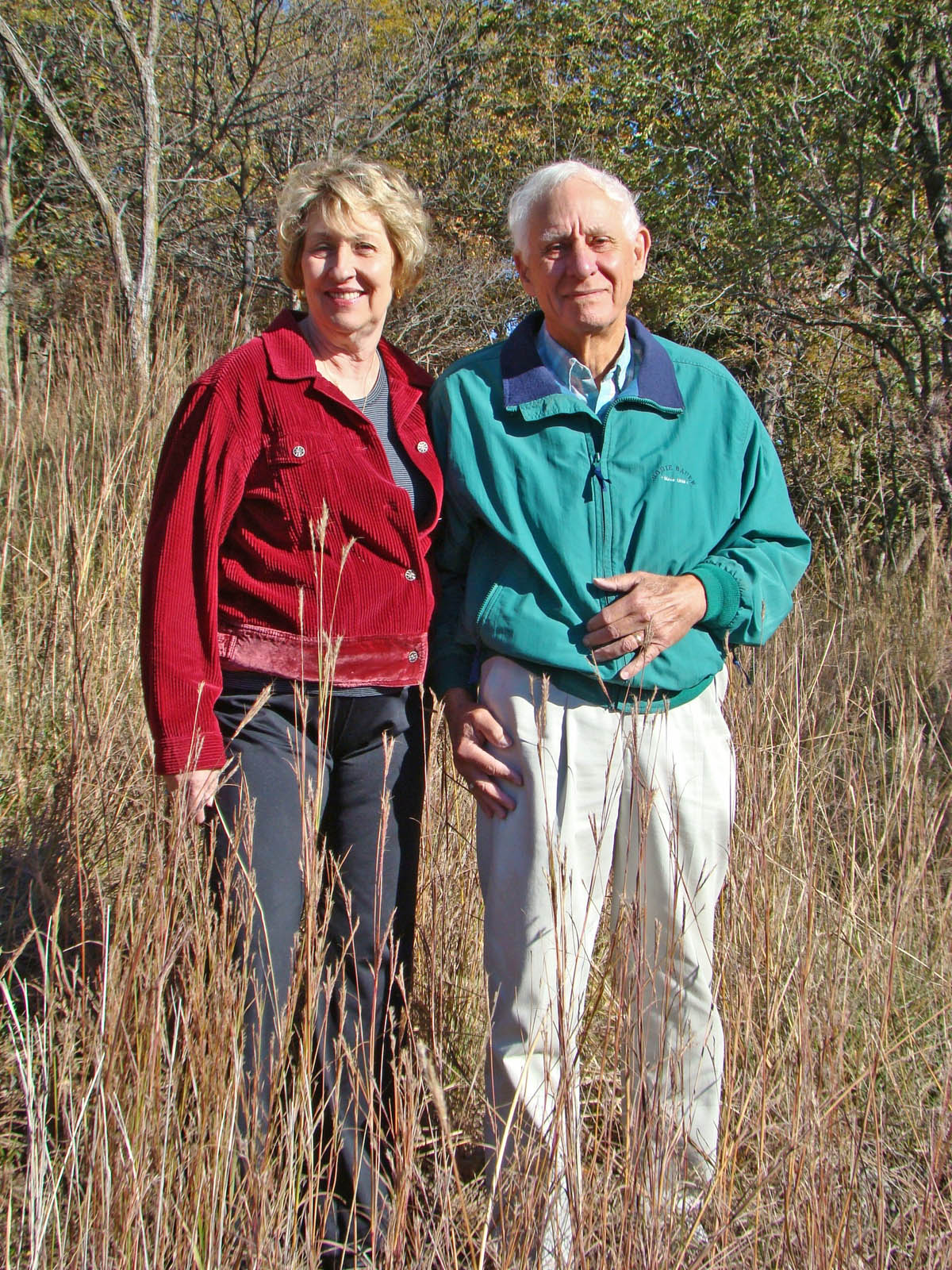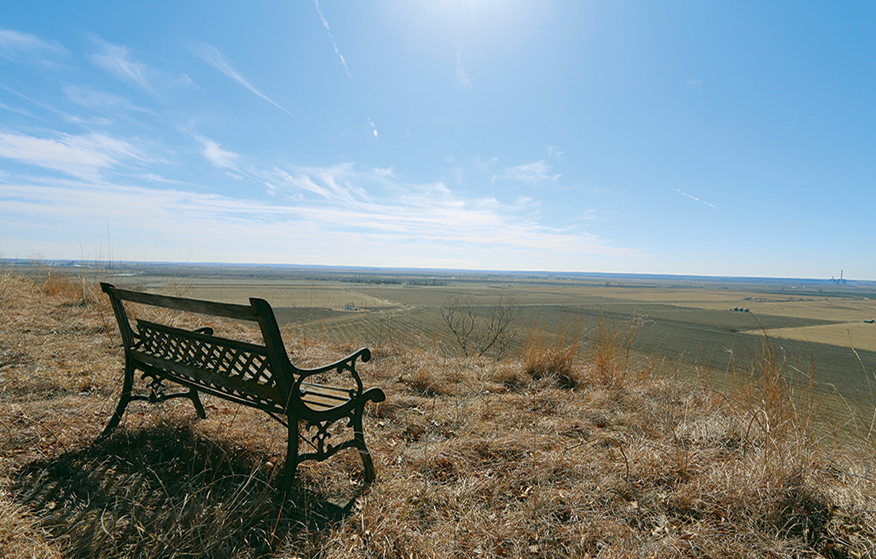Permanently Protecting a Loess Hills Treasure
By Joe Jayjack on September 12, 2016 in Landowner Stories
John Wanamaker may not know precisely how many babies he delivered in his career as a doctor, but he can tell you that he has fledged exactly 950 baby bluebirds since he created a bluebird trail in 1993 on his Fremont County property.
 This is just one example of the care Wanamaker has taken to protect the land and wildlife on the 411-acre Loess Hills property he inherited from his aunt and uncle in 1989. He and his late wife, Karen, helped preserve this invaluable piece of land through a significant bargain sale to Iowa Natural Heritage Foundation in 2014; the Wanamakers donated two-thirds of the land’s value. The site will soon transfer to the Iowa Department of Natural Resources to become a wildlife management area. The property is adjacent to Waubonsie State Park and is bordered to the west by the Loess Hills Scenic Byway.
This is just one example of the care Wanamaker has taken to protect the land and wildlife on the 411-acre Loess Hills property he inherited from his aunt and uncle in 1989. He and his late wife, Karen, helped preserve this invaluable piece of land through a significant bargain sale to Iowa Natural Heritage Foundation in 2014; the Wanamakers donated two-thirds of the land’s value. The site will soon transfer to the Iowa Department of Natural Resources to become a wildlife management area. The property is adjacent to Waubonsie State Park and is bordered to the west by the Loess Hills Scenic Byway.
Wanamaker and 17 other Iowans were honored in March at Gift to Iowa’s Future Day. Landowners who donated land or land value for conservation were presented with certificates of recognition by Lt. Gov. Kim Reynolds and Iowa DNR Director Chuck Gipp.
“I want to thank INHF and the DNR for providing the mechanism to make this possible,” Wanamaker said at the event. “If not for INHF, who would have helped us to do what we wanted to do? I don’t know how landowners could be sure their land would be permanently protected without the help of INHF and the DNR."
A deep family connection to the land
Wanamaker’s connection to this piece of land started long before he retired from medicine in Rock Port, Missouri, and moved there with Karen in the early 1990s. His uncle and aunt, Jack and Jean Good, bought the property in 1938.
“I’ve been going out there from the time I was 7. It was like a second home to me. We used to ride our bikes out there from town before I could drive,” said Wanamaker, who grew up three miles away in Hamburg, Iowa.
During their five decades of ownership, the Goods created an extensive path system throughout the property, fenced the pastures for cattle and briefly grew corn on the terraced hilltops. They also dammed a stream to create a large pond. “Many pleasant hours were spent by Jack, Jean, family and friends driving and hiking through the area, cooking at the bluff top cabin and picnicking and paddleboating at the pond,” Wanamaker wrote in his personal history of the property.
Jack Good also started the practice of cutting and clearing invasive Eastern red cedar and Autumn olive trees, which Wanamaker continued through his ownership. “(We) have found it an attainable but never-ending goal,” he wrote.
 Wanamaker may have been a doctor by trade, but he was a self-taught conservationist. He removed most of the interior fencing on the property and through prescribed burns encouraged the return of native prairie. His favorite spot on the property is the bluff ridge that overlooks the Missouri River bottom. “You can see Iowa, Nebraska, Missouri — and on a clear day, you can see Kansas.”
Wanamaker may have been a doctor by trade, but he was a self-taught conservationist. He removed most of the interior fencing on the property and through prescribed burns encouraged the return of native prairie. His favorite spot on the property is the bluff ridge that overlooks the Missouri River bottom. “You can see Iowa, Nebraska, Missouri — and on a clear day, you can see Kansas.”
Wanamaker’s protection of the land was a gradual progression. His personal stewardship of the property over the last few decades has been thoughtful and thorough. Then in 2007, the Wanamakers placed a conservation easement on the land through INHF that ensures the natural state of the land stays intact in perpetuity. Finally, when addressing the question of who would protect and restore the land after they were gone, the Wanamakers decided to entrust INHF and the Iowa DNR to do so.
Karen passed away in the fall of 2014, and John moved into a house in Hamburg. He trusts that INHF and the Iowa DNR will maintain the land as he hoped.
“I wanted the land to be preserved like it was, and I was afraid if I sold it to a private owner, it would deteriorate and the invasives would come in,” he said. “INHF was able to assure me that it would be protected.”
He’s also hoping the bluebirds are just the start of more wildlife in the area.
“When we first started, the only birds you’d see were house sparrows. By the time we left, there were so many songbirds! The work we did provided more habitat for them. It’s wonderful the way the bluebirds have come back.”